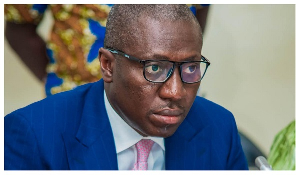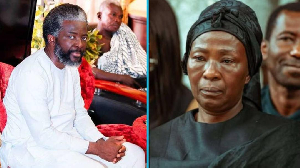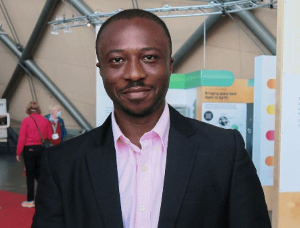It was in a series of clandestine meetings in Madrid, held throughout the course of the 2018-19 season, that Thomas Partey spoke with Arsenal representatives about how he envisaged his role in the team.
The head of international scouting at the time, Francis Cagigao, was spearheading Arsenal’s charm offensive. Over lunch, Partey spoke at length about his style of play, his preferred positions. He said his preference is to operate as one of a pair of deep-lying midfielders, but he can also play at the base alone. He talked admiringly of Granit Xhaka, and admitted he could envisage playing in tandem with the Switzerland international.
But there was something else. Partey had a conviction that there he had more to offer, that he could get better. The structural rigour that Diego Simeone imposed on his Atletico team left little room for self-expression.
The overriding impression Arsenal received was that of a player who believed moving to England could unlock new dimensions in his game. The club have landed themselves a player with convincing credentials, a midfielder with Champions League pedigree. But even at a mature 27, Partey is not coming to London to rest on his laurels. He has joined Arsenal because he believes he can improve.
Partey was born in Ghana, but his professional development has been dictated by Argentine football lore. It is clear even from the number he wore for his final few seasons in Madrid. The significance of the No 10 shirt in Argentinian football is legendary — it is the number worn by iconic attackers such as Lionel Messi, Diego Maradona and Juan Roman Riquelme. There is, however, another number that holds a similarly sacred status: the No 5.
In Argentina, the “No 5” has become shorthand for describing the team’s most defensive-minded midfielder. Occasionally, Argentinians will describe a typical No 5 as a “pacman” — shuttling side to side, chewing up the turf and eating up loose balls. At World Cups, the number has been sported by Fernando Redondo, Matias Almeyda and Esteban Cambiasso. Javier Mascherano wore No 14, but he remained unquestionably a “cinco”.
At its best, exponents of the role combine defensive acumen with intelligent build-up. “When I think of the ‘cinco’, I like the type of player who assumes responsibility, who always offers for the ball, the one who manages the tempo of a team,” Redondo once explained. “It’s a very important position, you have to have a player who knows how to play, who reads the game, who has the precision to break the opponent’s press.”
Simeone, who won 106 caps for Argentina, was himself a No 5 — he once described his style of midfield play as akin to a man “holding a knife between his teeth”. It is the No 5 shirt that Simeone bestowed on Partey at Atletico — the same number he would have inherited at Arsenal, were it not for incumbent Sokratis failing to secure a deadline day move.
It is arguably more than just a number — it’s indicative of how Simeone sought to mould Partey. In the early loans at Mallorca and Almeria in which he first caught Arsenal’s eye, the Ghanaian played a variety of roles — box-to-box midfielder, right winger, even No 10. It was when he returned to Atletico that Simeone began to shape him into the holding midfield player he required.
Steadily, Partey absorbed Simeone’s tactical blueprint. In Madrid, they have observed that positional sense can be taught if a player has a willingness and aptitude to learn. “Partey is someone who brings you massive defensive stability,” says one Premier League scout. “Not particularly because he’s big, not because he’s strong, not because he’s especially quick — he can do that stuff, but it’s because of how he understands space.” It took Partey time to win Simeone’s trust, but when Atletico club captain Gabi departed in the summer of 2018, the Ghanaian began to settle into his central midfield role.
The scouting reports that came back to Arsenal described a player who was dominant in duels and efficient in possession. Despite standing over 6ft tall, it wasn’t his aerial ability that stood out — it was his ability to go into contact with another player, shoulder to shoulder, and emerge with possession. He is lean, but surprisingly powerful too.
Technically, he is as clean as you would expect for a player honed in the Spanish academy system. He has not been, under Simeone, a penetrative passer — under instruction, he has looked to play short and medium-range passes to circulate possession to more creative players.
A consummate team player, Partey arrives with a game underpinned by strict tactical discipline. Arteta has spent the best part of a year attempting to school this Arsenal squad in the importance of structure, spacing and phases of play. Partey arrives having already undergone a taxing football education. It is a language in which he is already fluent.
As the transfer window entered its final weekend, Arsenal were focused on finding a “cinco” of their own — or, in European numbering convention, a “No 6”. With Lucas Torreira and Matteo Guendouzi both departing on loan, Arteta’s only senior options in the role were Xhaka, Dani Ceballos and Mohamed Elneny. Arsenal were interested in Chelsea’s Jorginho, but the Italian international was not for sale.
Partey was a more expensive option — and perhaps a little older than Arsenal would consider ideal. The scouting department had also filed glowing reports of Lille’s 21-year-old Boubakary Soumare, with the substantial caveat offered that he remained raw. Ultimately, a decision was made by the Arsenal executive committee, including manager Arteta, that the club were happy to acquire a player already in the peak of his career, with a wealth of experience at the highest level, as opposed to gambling more on a younger, cheaper and less well-rounded option.
Able to play as the sole defensive midfielder or with a partner, Partey unlocks more midfield shapes for manager Mikel Arteta to use in future. He ticks all the boxes of Arteta’s specifications for a screening No 6. Partey is now the primary option for that position — more mobile than Ceballos and Xhaka, and more physically and technically gifted than either Elneny or Joe Willock.
Despite Arteta’s current preference for a 3-4-3, The Athletic understands Arsenal’s technical staff still envision the team ultimately developing into a 4-3-3 system, akin to the one adopted by Liverpool and Manchester City. Arsenal don’t have the quality No 8s that those two teams boast — a move for Lyon’s Houssem Aouar ultimately proved fruitless — but having Partey in place is at least a start. He can provide the security and strength through the spine that could enable Arteta to move away from the back three.
Perhaps he can offer more than that. There is a sense that Simeone kept Partey on a very tight leash. When he breaks forward, he offers considerable threat. He possesses a ferocious long-range shot off his right boot. At international level, he has occasionally operated as a second striker, and has an impressive record of 10 goals from 27 Ghana caps.
Arsenal are unlikely to push Partey into the final third — they have bought him as a defensive midfielder. However, with a little more freedom, he could help Arsenal build the play more effectively. His passing has the potential to be more expansive. His dribbling is an effective weapon in transition — only four central midfielders in La Liga had a higher dribble success rate last season (Arthur, Iddrisu Baba, Hector Herrera and Geoffrey Kondogbia). His ability to break through the lines could help Arsenal spring into attack.
Arteta is building a team, piece by piece. Signing Pierre-Emerick Aubameyang to a new contract felt like an important component piece, and the acquisition of coveted centre-half Gabriel also looks like smart business. A spine is emerging. In Partey, he has his chosen holding midfield player — and Arsenal have their “cinco”.
Sports News of Sunday, 11 October 2020
Source: footballmadeinghana.com













